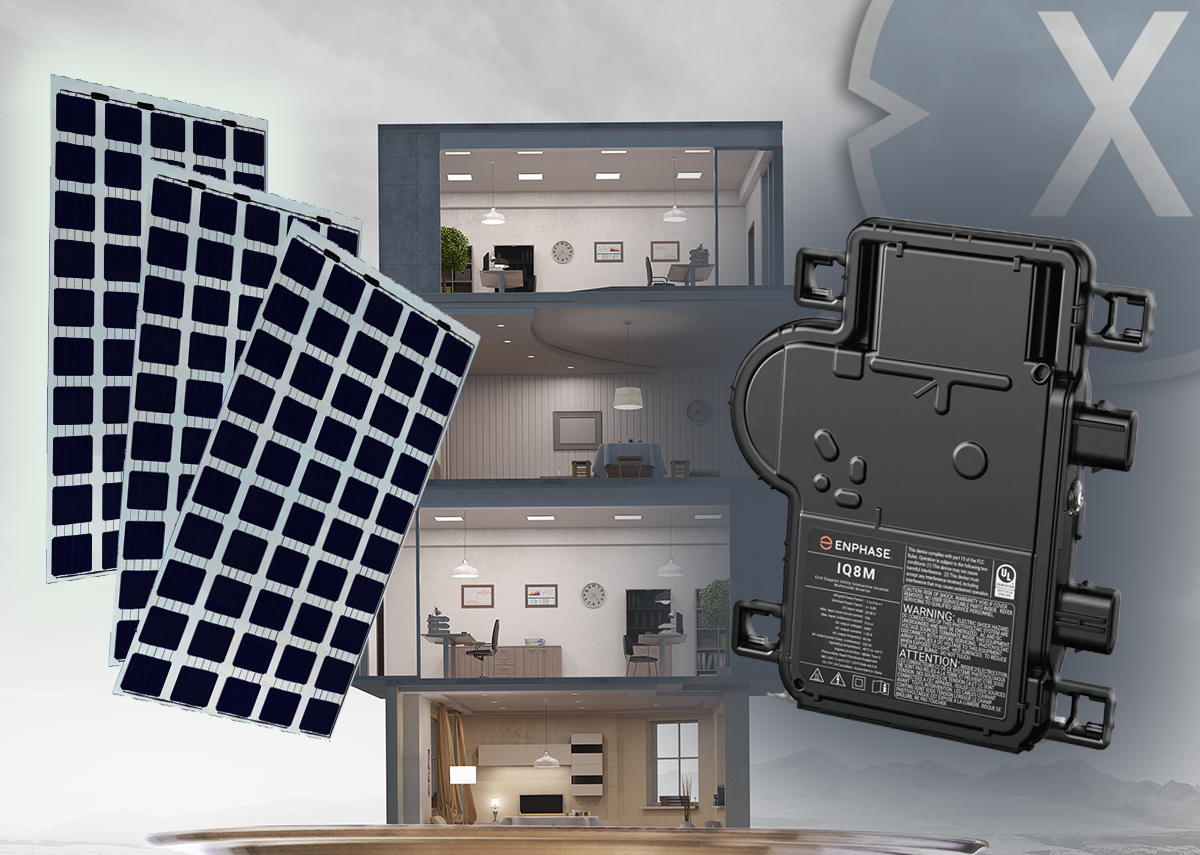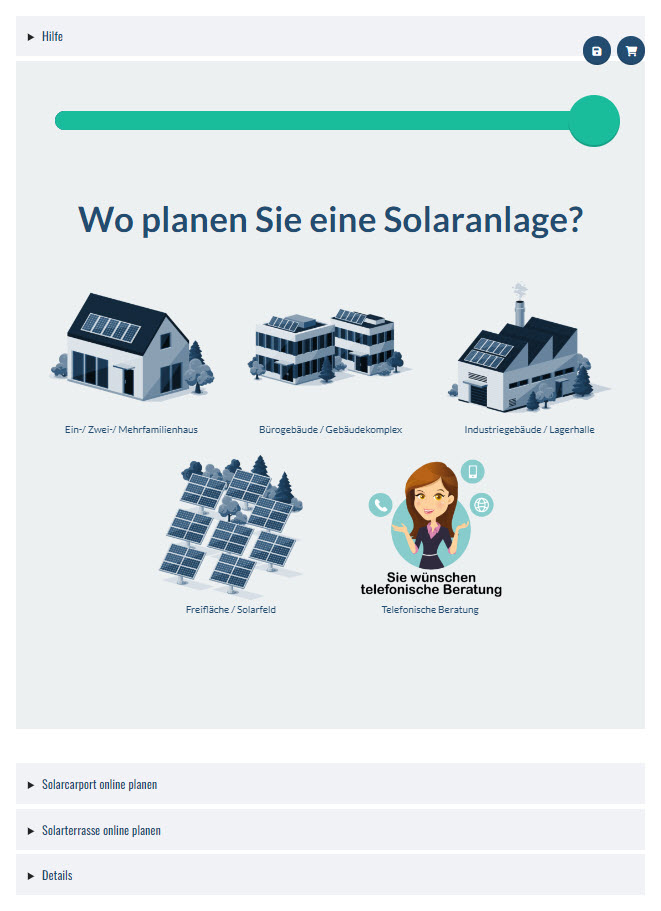The winter strategy for PV systems in the 'dark months': optimization potential through energy storage, microw interchangeable and dimensioning
Language selection 📢
Published on: November 29, 2024 / Update from: November 29, 2024 - Author: Konrad Wolfenstein

The winter strategy for PV systems in the 'dark months': optimization potential through energy storage, microw interpreters and dimensioning-creative image: xpert.digital
🌞🔋 The so-called “dark months” for photovoltaic (PV) technology
🌧️❄️ The so-called “dark months” for photovoltaics (PV) refer to the time of year when solar power yields decrease sharply due to lower solar radiation and shorter daylight hours. Typically this phase occurs in the winter months, from October to March, with yields being lowest in the months of December to February. Nevertheless, it is clear that even in this phase, PV systems can make a contribution to the energy supply that should not be underestimated - provided that the general conditions are optimal.
During the winter half-year, which extends from October to March, PV systems usually only generate around 20 to 30 percent of their annual electricity yield. Especially in the months of December, January and February it becomes clear how strongly the dependence on seasonal factors influences the yield. During these “dark months”, a PV system only contributes an average of 7.5 percent to the total annual yield. The reasons for this reduction are diverse and can be attributed to several physical and weather-related factors:
🌥️💡 Reasons for lower solar yields in winter
- Shorter daylight hours: In the winter months the sun shines for significantly fewer hours per day than in summer. This inevitably leads to a limited period of time in which the modules can generate electricity.
- Low position of the sun: The position of the sun is significantly lower in winter. This means that the sun's rays hit the earth at a flatter angle, which reduces the intensity of the radiation. Less intense sunlight also means lower energy output.
- Cloudy and diffuse lighting conditions: Cloudy days and diffuse lighting conditions are common, especially in winter. This reduces the direct sunlight required for efficient electricity generation.
- Snow and ice: In regions with severe winters, snow covering the solar panels can temporarily block electricity production completely. Ice formation on the modules poses an additional challenge.
Suitable for:
🛠️⚡ Technological adjustments and optimization options
Despite these challenges, modern PV systems show that they can also provide valuable energy in winter. Thanks to technological innovations and well-thought-out system concepts, efficiency is constantly being increased. There are various ways to maximize electricity yield in the winter months:
Efficient energy storage
Energy storage systems are a crucial factor in increasing the efficiency of PV systems in winter. Excess electricity generated during the day can be stored in batteries and used in the evening hours, when demand is often highest.
Use of microinverters

Decentralized and modular plug & play solar system with microinverter – Image: Xpert.Digital / Xpert.Solar
An important aspect of maximizing the efficiency of PV systems, especially when individual modules are shaded or covered by snow, is the use of microinverters such as those from Enphase. Unlike traditional string inverters, where multiple modules are connected in series and the weakest module influences the performance of the entire string, with microinverters each module works independently. This means that shadows or power losses on one module do not affect the performance of the rest of the system.
By using microinverters, the overall performance of the PV system can be optimized, even if individual modules are affected by snow, dirt or shadows. This is particularly advantageous in the winter months when the sun is lower and shadows from surrounding objects can occur more often.
Suitable for:
In addition, microinverters offer the advantage of more flexible system planning and expansion. Since each module works individually, systems can be more easily adapted to specific circumstances and expanded if necessary. They also enable detailed monitoring at the module level, which makes troubleshooting and maintenance easier.
Interesting facts about photovoltaic modules
A common misconception is that solar systems work less efficiently in cold weather. In fact, the opposite is true: photovoltaic panels work more efficiently at lower temperatures than at high ones. High temperatures can reduce the electrical performance of the modules, while cool conditions improve electrical conductivity and therefore increase performance. This means that a considerable amount of electricity can be generated on sunny winter days despite low temperatures.
Innovative technologies and intelligent solutions help to maximize solar yields in winter. In addition to microinverters, these include, for example, bifacial solar modules that use both direct and reflected light, or tracking systems that track the position of the sun and thus optimize irradiation. Cleaning the modules of snow and dirt can also significantly improve performance.
Reflecting sunlight through snow can also have positive effects. In snow-covered landscapes, the albedo effect increases the radiation on the modules. This can lead to an increase in electricity production as long as the modules themselves are not covered by snow. This is where the advantages of microinverters come into play, as they maximize the performance of the modules that are not shaded.
The orientation of the solar modules also plays a crucial role. While a south-facing system will in most cases produce the best annual yields, a slight east or west orientation can help increase electricity production in the morning or evening hours. This can be particularly beneficial in winter when the sun is lower and daylight hours are limited.
Snow removal and maintenance
In snowy regions, it makes sense to regularly remove snow from the solar modules so as not to unnecessarily restrict electricity production.
To minimize the impact of snow, solar panels can be installed at a steeper angle. This makes it easier for snow to slide off the modules. Some homeowners also choose to clear snow from their panels manually or with specialized equipment to ensure power production.
💡🌨️ Photovoltaics: A worthwhile investment even in winter
Many homeowners underestimate the possibilities that PV systems offer, even in the winter months. Modern systems can generate enough electricity for self-consumption even when solar radiation is low. What is particularly important here is the combination with a storage system that makes it possible to cover the basic load of a household. Base load is the continuous energy requirement that arises, for example, from refrigerators, heating pumps or routers.
A question that is often asked is whether investing in a solar system makes any sense given the reduced winter yields. The answer to that is clearly “yes”. Although yields are higher in the summer months, the increasing energy efficiency of modern systems means that enough electricity is generated in winter to cover at least part of your own needs. In addition, renewable energies not only have ecological advantages, but also help to reduce energy costs in the long term and reduce dependence on fossil fuels.
❄️☀️ The underestimated power of the winter sun
Contrary to the popular belief that solar panels do not work efficiently in cold temperatures, studies show that photovoltaic panels actually work better in low temperatures than in extreme heat. The physical properties of solar cells mean that their performance increases slightly in cooler conditions. A clear, cold winter sun on a cloud-free day can produce surprisingly good results.
What is particularly interesting is the fact that a certain amount of electricity production is possible even on cloudy days or in diffuse light. Thanks to technical developments in cell technology, many PV systems can provide acceptable performance even with weak irradiation. This makes them a reliable source of energy, even in months when the sun rarely shines.
🌍🔄 Solar systems as part of a sustainable energy system
The integration of solar systems into a comprehensive energy management system is an important step on the way to a climate-neutral energy supply. In addition to the classic PV system on the roof, other technologies such as heat pumps, intelligent control systems and the use of wind or biomass energy also play a role. Ideally, these technologies work hand in hand to achieve maximum energy efficiency.
The role of storage technologies is particularly relevant here. With the help of modern battery systems, households can not only ensure energy supply in the evening hours, but also improve grid stability by feeding excess electricity into the public grid. This is particularly important in the winter months when energy requirements are higher due to heating use and prolonged darkness.
Suitable for:
- Renewable energies: Now it's all about energy storage systems
- Blog: Electricity storage, battery storage and energy storage
🌟🔋 Photovoltaics in winter is more than an emergency solution
The so-called “dark months” for photovoltaics are by no means a reason to question the installation of a PV system. Although the yields during this time are significantly lower than in the summer months, with the right measures and technologies, a valuable contribution to the energy supply can also be made in the winter months.
Modern solar systems are more efficient than many people think - even when the sky is cloudy or snowy. In combination with energy storage, optimized module technologies and a well-thought-out orientation, they are able to not only cover the base load of a household, but also contribute to reducing energy costs in the long term. If you also rely on an integrated energy management system, you can use the advantages of renewable energies all year round.
The importance of photovoltaics in winter will continue to increase in the future, as both technological advances and government subsidies support the expansion of solar energy. It is therefore worthwhile to use the possibilities of modern PV systems and make a contribution to sustainable energy supply - not only in summer, but also in the “dark months”. 🌤️
📣 Similar topics
- 🌞 Efficiency of PV systems even in winter
- ❄️ Solar power in the “dark months”: Is it worth it?
- 💡 Energy supply through photovoltaics despite low sunlight
- 🌍 Climate protection in winter: solar systems as a sustainable solution
- ⚡ Maximum energy production despite winter conditions
- ⚙️ Technological optimizations for PV systems in dark months
- 🌬️ Energy from diffuse light: photovoltaics in winter
- 🔋 Battery and storage solutions for solar power in the winter time
- 🧹 Maintenance of solar systems: How snow and shading affect yield
- 🎯 Strategies to increase yields in the winter months
#️⃣ Hashtags: #photovoltaics #solar energy #renewableenergies #winteroperation #climate protection
Plan your solar system for the most common applications conveniently online with our solar system planner!
With our user-friendly solar system planner you can plan your individual solar system online. Whether you need a solar system for your home, your business or for agricultural purposes, our planner offers you the opportunity to take your specific requirements into account and develop a tailor-made solution.
The planning process is simple and intuitive. You simply enter relevant information. Our planner takes this information into account and creates a tailor-made solar system that meets your needs. You can try out different options and configurations to find the optimal solar system for your application.
Additionally, you can save your plan to review later or share with others. Our customer service team is also available to answer your questions and provide support to ensure your solar system is optimally planned.
Use our solar system planner to plan your individual solar system for the most common applications and advance the transition to clean energy. Start now and take an important step towards sustainability and energy independence!

The solar system planner for the most common applications: Plan the solar system online here - Image: Xpert.Digital
More about it here:
🌞 The economic viability of photovoltaic systems (PV systems)
🌍 The economic viability of photovoltaic systems (PV systems) should not only be assessed based on the yields in the summer months. Rather, the total return over the entire year and the lifespan of the investment is crucial. Even if electricity production is lower in winter, it still helps reduce electricity costs and supports the achievement of sustainability goals.
🌟 Value of solar power in winter
It is important to consider that electricity prices tend to be higher in the winter months as energy consumption increases. During this time, self-generated solar power can be particularly valuable. Every kilowatt hour generated by renewable energies makes a significant contribution to reducing CO₂ emissions and protecting the climate. The use of solar energy reduces dependence on fossil fuels and promotes a more environmentally friendly energy supply.
💪 Robustness and longevity of modern PV systems
Modern PV systems are designed to withstand a wide range of weather conditions. They are sturdy and durable, making them a long-term investment. Maintenance requirements are typically low because many systems are equipped with monitoring systems that continually monitor operations and raise alarms in the event of problems. Microinverters offer additional benefits by providing detailed module-level data, enabling early detection of performance deviations.
📈 Lifespan and economic benefit
The lifespan of PV systems is usually 25 years or more. Over this period, electricity yields add up significantly, even if the winter months are less productive. If you look at the total costs over the lifespan of the system, there is a positive economic effect. The initial investment costs are amortized through savings in electricity costs and possible feed-in tariffs.
🔋 Independence from fluctuating electricity prices
Another significant advantage of PV systems is their independence from fluctuating electricity prices. By generating your own electricity, you can protect yourself against rising energy costs. This not only offers financial advantages, but also a degree of autonomy from energy suppliers. The ability to store excess energy in battery systems further increases this independence.
🚀 Technological advances and innovations
Photovoltaic technology has made significant progress in recent years. New materials and production methods have led to more efficient solar panels that can generate more energy from the same area. In addition, innovative energy storage solutions enable better use of the electricity generated by storing surpluses and releasing them when needed.
🌍 Contribution to the energy transition
PV systems play a central role in the energy transition towards a sustainable energy supply. They help to increase the proportion of renewable energies in the energy mix and thus reduce dependence on fossil fuels. By expanding solar energy, countries can achieve their climate goals while increasing their energy security.
🌿 Social and environmental benefits
In addition to the economic aspects, PV systems also offer social and ecological benefits. They create jobs in research, development, production and installation of solar technologies. They also promote awareness of environmentally friendly technologies and help improve air quality.
In summary, it can be said that photovoltaic systems not only represent an economically sensible investment, but also make an important contribution to climate protection and sustainable development. Their ability to generate clean energy while reducing dependence on fossil fuels makes them an essential part of a sustainable energy supply.
📣 Similar topics
- 📣 The future of energy: Why PV systems are indispensable
- 🌞 Solar power in winter: An underestimated climate savior
- 💡 Independent through your own electricity: PV systems as a solution to fluctuating electricity prices
- 🚀 Progress thanks to innovation: Technological developments in PV systems
- 🌿 Energy transition and climate protection: The role of photovoltaics
- 🔋 Battery storage as the key to energy autonomy
- 🛡️ Durable and robust: The construction of modern PV systems
- 🌍 Economic efficiency meets sustainability: PV systems as an investment
- ⚡ Renewable energies in everyday life: How photovoltaics creates jobs
- ✨ Clean energy for a greener future
#️⃣ Hashtags: #RenewableEnergy #Photovoltaics #Climate Protection #Sustainability #Energy Transition
We are there for you - advice - planning - implementation - project management
☑️ Construction and advice on photovoltaic open-space systems
☑️ Solar park planning ☑️ Agri-photovoltaic implementation
☑️ Solar outdoor systems with dual-use solutions
Xpert.Solar is your ideal partner for the planning, consulting and construction implementation of ground-mounted photovoltaic systems and agricultural photovoltaic projects due to our many years of experience and expertise in the solar energy industry. Xpert.Solar has an experienced team of professionals that offers tailored solutions to farmers and investors. From location analysis to financial and legal advice to technical implementation and monitoring, Xpert.Solar supports its customers professionally and reliably to ensure successful and sustainable implementation.
I would be happy to serve as your personal advisor.
You can contact me by filling out the contact form below or simply call me on +49 89 89 674 804 (Munich) .
I'm looking forward to our joint project.
Xpert.Digital - Konrad Wolfenstein
Xpert.Digital is a hub for industry with a focus on digitalization, mechanical engineering, logistics/intralogistics and photovoltaics.
With our 360° business development solution, we support well-known companies from new business to after sales.
Market intelligence, smarketing, marketing automation, content development, PR, mail campaigns, personalized social media and lead nurturing are part of our digital tools.
You can find out more at: www.xpert.digital - www.xpert.solar - www.xpert.plus



























